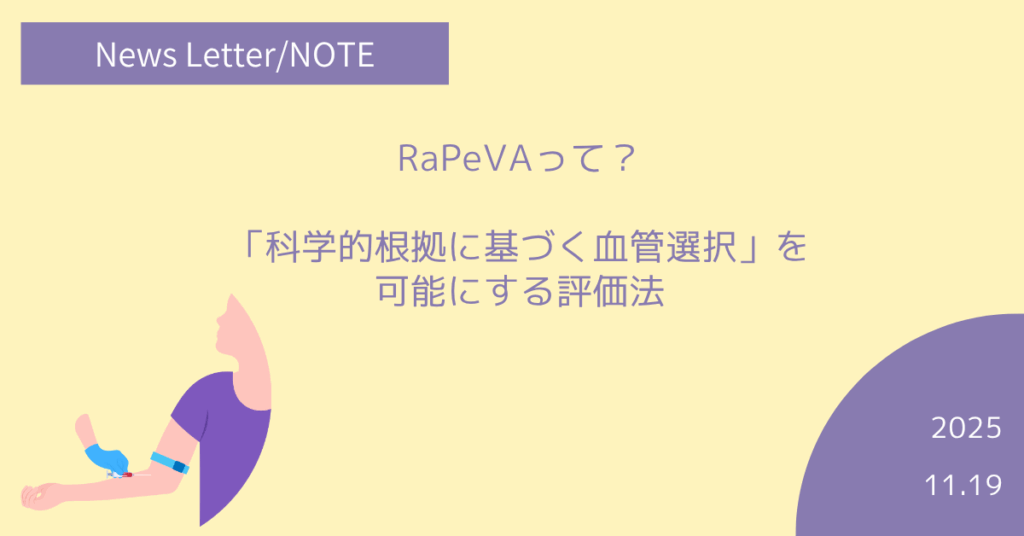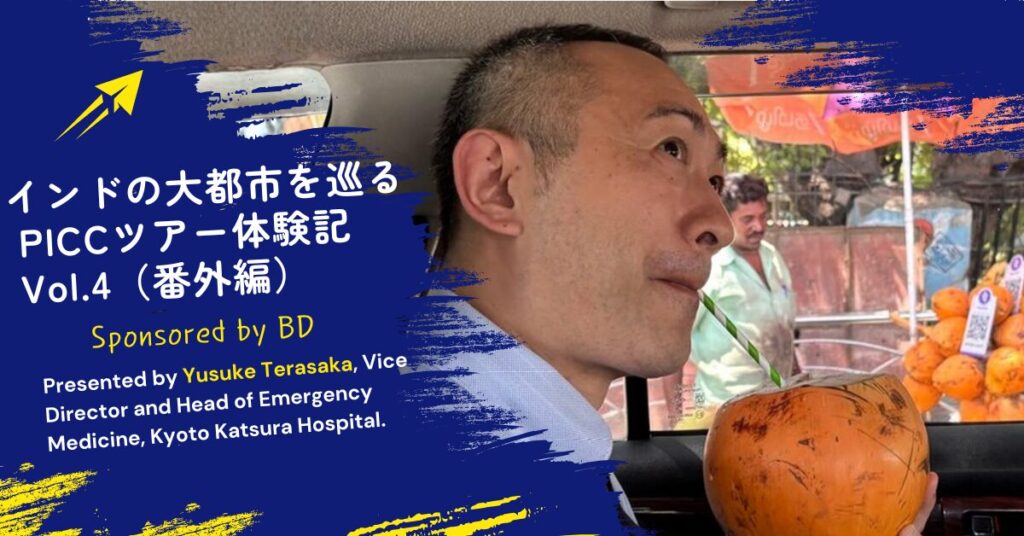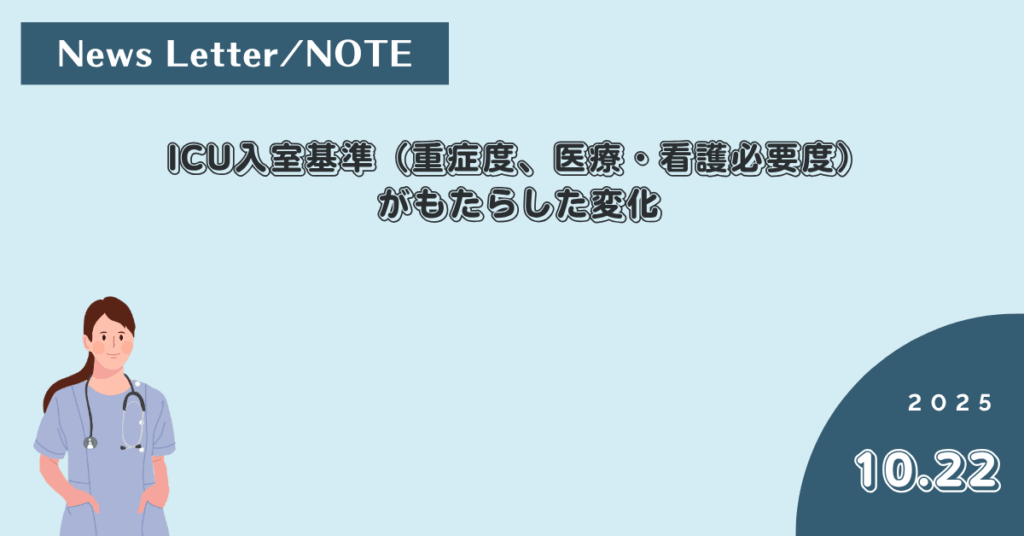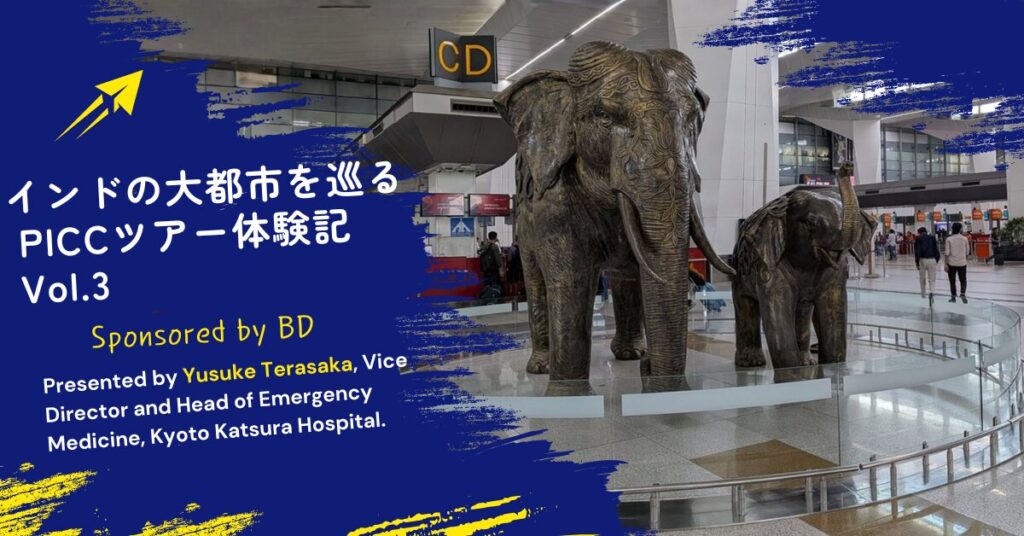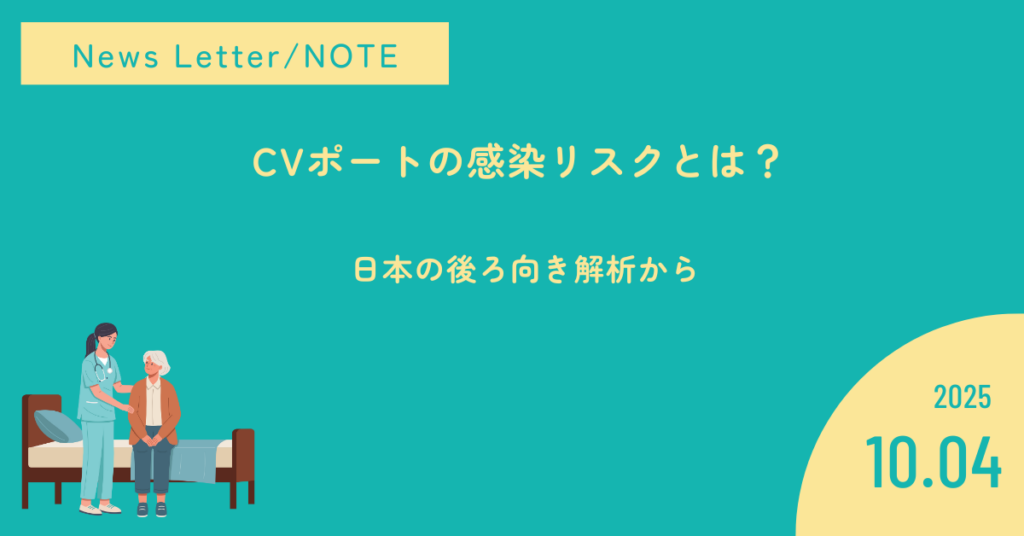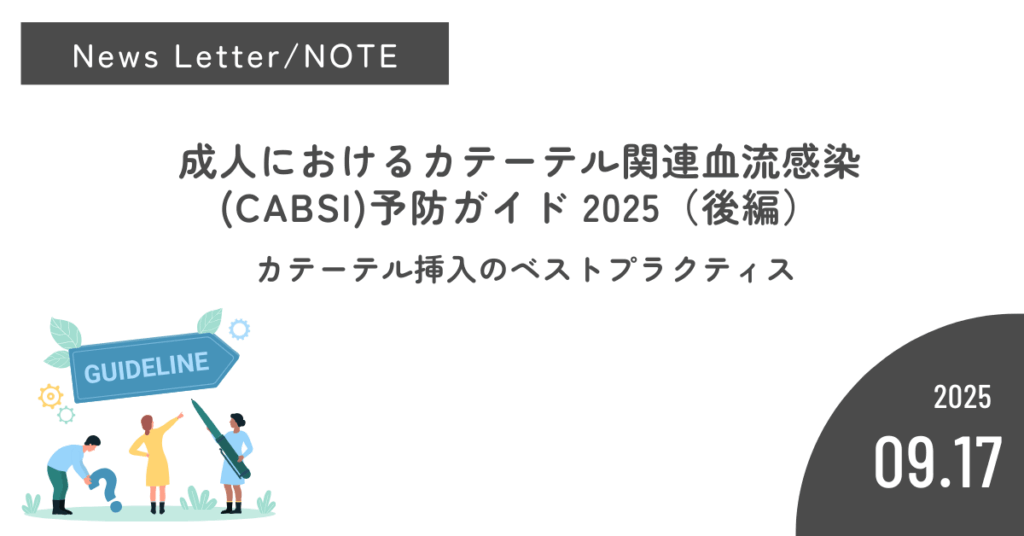NEWS

What is RaPeVA?
RaPeVA (Rapid Peripheral Vein Assessment) is a standard procedure for safely inserting a PICC (Peripherally Inserted Central Catheter). It involves systematically observing and evaluating the veins in both upper limbs using ultrasound to select the most suitable vessel and side (right or left). This helps prevent complications associated with PICC insertion, such as thrombosis, infection, and bleeding.
Do you know the SIP protocol?
The SIP protocol is an evidence-based standardized procedure to systematically reduce complications that can occur during PICC insertion, including thrombosis, infection, dislodgement, malpositioning, and nerve damage. 2014 version based on ultrasound evaluation (RaPeVA), exit zoning (ZIM), tip position by IC-ECG Confirmation...
Information on the 5th J-IVCARES Research Meeting
The Japanese Intravascular Catheterization Research Council of America (JIVCARES), an educational and research organization for catheter management, will hold a research meeting on November 29, 2012. We are planning to introduce the latest literature and educational lectures as well as research. We hope you will be able to join us...
PICC Tour Experience in Major Cities in India Vol. 4 (Extra)
India's extravaganza: food, tourist attractions, etc. The Indian subcontinent is an extremely diverse cultural sphere, supported by its diverse topography surrounded by mountains and oceans, where multiple religions such as Hinduism, Islam, and Christianity coexist, and more than 20 official languages are used, including not only Hindi and English. This time...
Changes brought about by ICU admission criteria (severity of illness, medical and nursing care needs)
In April 2014, the Ministry of Health, Labor and Welfare introduced the "ICU admission criteria (severity of illness and medical/nursing necessity). These criteria limit patients who can be admitted to the ICU to those who "require a certain level of monitoring and treatment," and the system is designed to calculate reimbursement according to the implementation of such monitoring and treatment. This allows ICU...
PICC Tour Experience in Major Cities of India Tour in India Part 3
Yusuke Terasaka, Vice President and Head of the Department of Emergency Medicine, Kyoto Katsura Hospital Values of PICC among physicians in various fields in India: Through a panel discussion Three important techniques for proper PICC insertion and positioning in Delhi, Mumbai, Chennai, and Kolkata....
What is the Risk of CV Port Infection? From a Japanese retrospective analysis
The CV port (subcutaneous implantable central venous access port) is the central venous catheter of choice when prolonged chemotherapy is required or when high-calorie infusions must be administered at home. By removing the needle, the special design of the entry site...
PICC Tour Experience in Major Cities of India Tour in India Part 2
Yusuke Terasaka, Vice President and Head of the Department of Emergency Medicine, Kyoto Katsura Hospital This time, we visited six representative hospitals in India (with 400 to 1,500 beds) to observe the introduction of PICC (peripherally inserted central venous catheter). At these hospitals, 10 to 15 PICC insertions are performed per day, and at each facility...
Catheter-Associated Bloodstream Infection (CABSI) Prevention Guide 2025 in Adults (Part 2)
We continue to introduce the "Guide to Prevention of Catheter-Associated Bloodstream Infection (CABSI) in Adults" published by the Association for Professionals in Infection Control and Epidemiology (APIC) in the United States in 2025. In this second part, we introduce best practices for catheter management...
PICC Tour Experience in Major Cities of India Tour in India Part 1
Yusuke Terasaka, Vice President and Chief of the Department of Emergency Medicine, Kyoto Katsura Hospital This time, I visited major cities in India for 9 days and 7 nights to inspect local hospitals and medical sites. India has the world's largest population and the fastest growing economy, but there is a great disparity in the field of medical care between public and private hospitals, and between urban and rural areas. We actually visited PICC, a...

